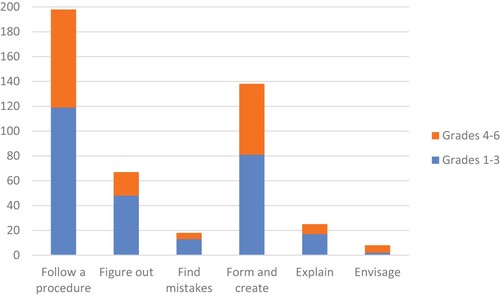Figures & data
Table 1. Number and proportion of tasks in each grade span in which the identified computational concepts are included.
Table 2. Number and proportion of tasks in which each identified mathematical concept is included.
Figure 2. Example of “Follow a procedure” in a task for grade 1 (Favorit matematik 1B, p. 187). Translation: Follow the instructions. Draw the robot’s path to the parcel. Go 2 boxes → Go 1 box, etc.
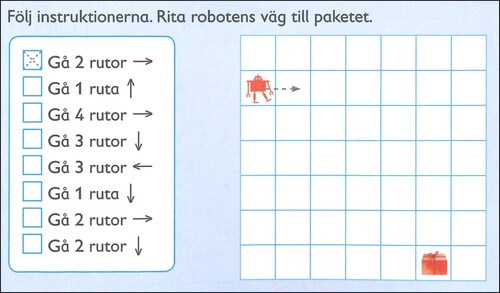
Figure 3. Example of “algorithm” in a task for grade 4 (Singma 4B, p. 175). Translation: Pair each bracelet with the correct algorithm. 5 {2 red, 1 orange, 1 pink} Start – Repeat – red, orange, pink
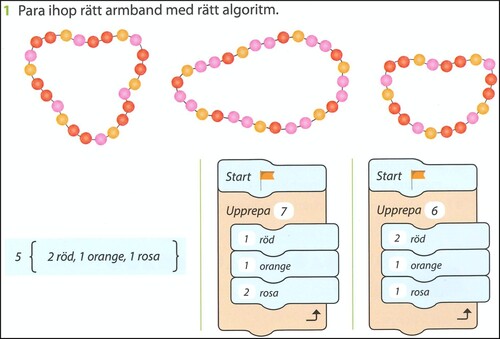
Figure 4. An example of decoding in a task for grade 1 (Matematik Favorit 1A, p. 185). Translation: What are the names of Kurre’s friends? Solve the code. In the pictures you can find Taggis, Kvack, Mimmi, Nyfiken, Amina, Nicko.
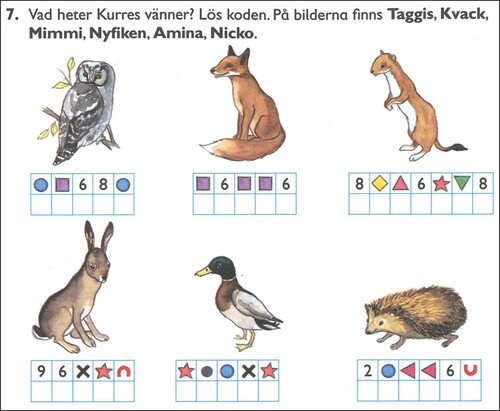
Figure 5. Example of a programming task connected to geometry in grade 5 (Matematik Favorit 5A, p. 162). Translation: Follow the instructions. What is the name of the geometrical object created? Place the tip of the pencil at the starting point on the paper. Repeat 4 times. Move the pencil 2 boxes. Turn 90° counterclockwise. Remove the pencil from the paper. Do like this: Mark a starting point in your book.
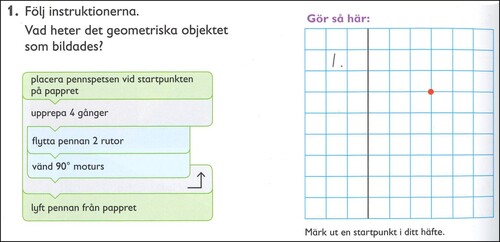
Figure 6. (a) Example of a pattern task connected to computational thinking in grade 1, classified as “Follow a procedure” (Matematik Favorit 1A, p. 184). Translation: Repeat the pattern. (b). Example of a pattern task connected to programming in grade 3, classified as “Form and create” and “Figure out” (Singma 3B, p. 130). Translation: How is each pattern repeated? Describe with a code.


